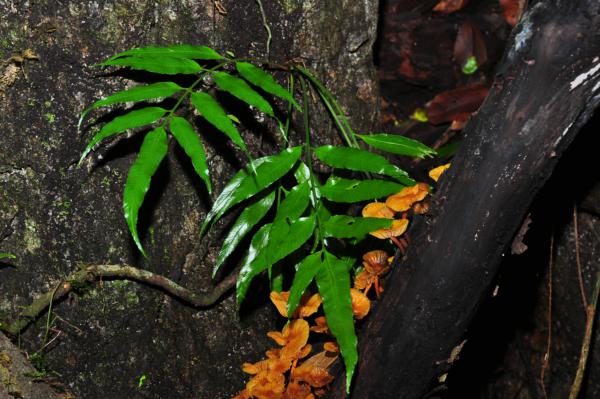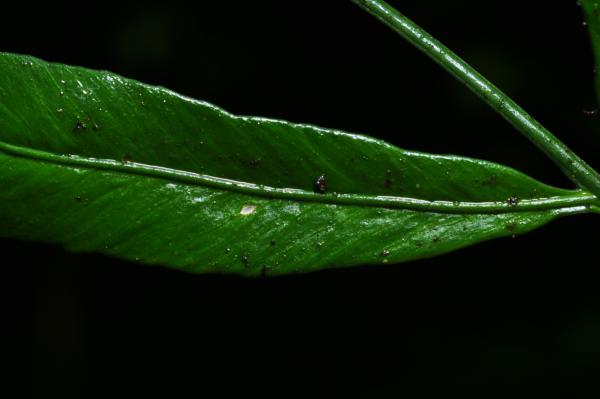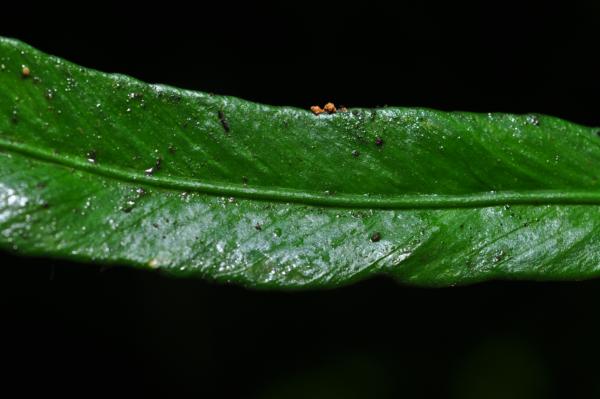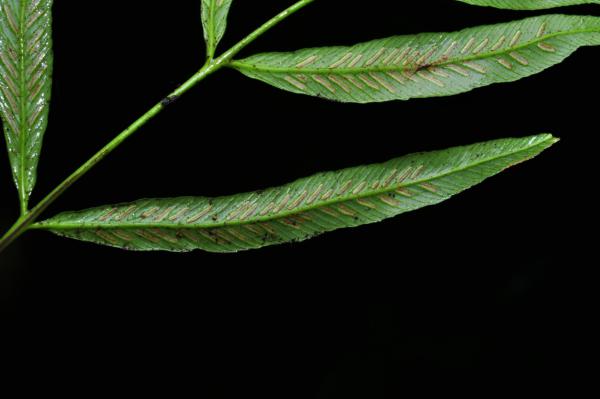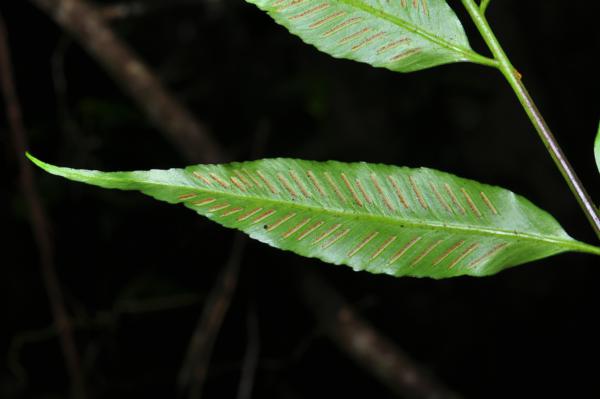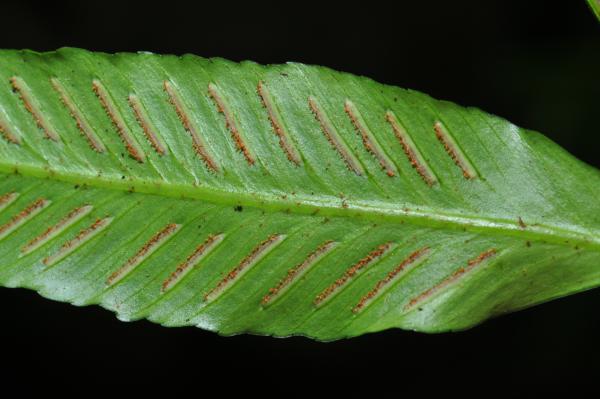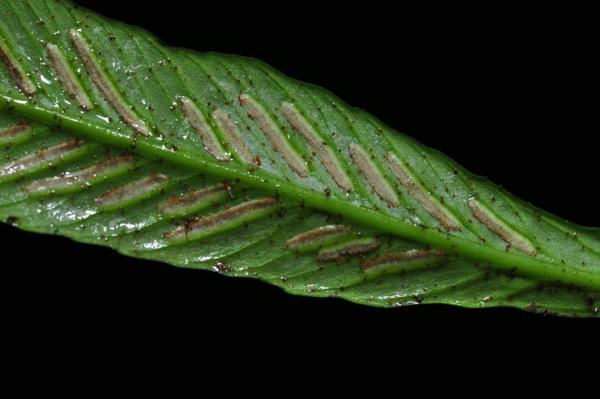
Asplenium salignum Blume
Family
Aspleniaceae
Nomenclature
Asplenium salignum Blume, Enum. Pl. Javae.: 175. 1828; Holttum, Rev. Fl. Malaya ed. 1, 2: 421, f. 243. 1955 [‘1954’]; Tagawa & K.Iwats., SouthE. Asian Stud. 5: 85. 1967; Tagawa & K.Iwats., Fl. Thailand 3: 272. 1985; Boonkerd & Pollawatn, Pterid. Thailand: 177. 2000.
Asplenium mactieri Bedd., J. Bot. 1883: 3. 1883; Bedd., Suppl. Ferns Brit. Ind.: 27. 1892.
Asplenium schmidtii C.Chr., Bot. Tidsskr. 32: 346. 1916.
Asplenium vulcanicum auct. non Blume: Christ, Bot. Tidsskr. 24: 108. 1901.
Description
Epiphytic or lithophytic. Rhizome short, ascending, scaly; scales appressed, narrowly subdeltoid, long-acuminate at apex, about 10 by 1.5 mm, dark brown and more or less clathrate centrally, the edges paler, thin-walled, irregularly margined, about 0.1 mm broad. Stipes 10–30 cm long; green to stramineous, darker towards base, wingless, glabrous or minutely scaly. Laminae simple to pinnate, simple frond like the terminal pinna of pinnate frond, up to 35 by 25 cm in pinnate form; lateral pinnae up to 3 pairs, shortly stalked or subsessile, linear, falcate, up to 20 by 2.2 cm, long-acuminate at apex, cuneate at base, entire, or minutely serrate above; terminal pinna and simple frond gradually narrowing towards long-acuminate apex, attenuate to cuneate at base, up to 30 by 3.5 cm, chartaceous, light green, glabrous or minutely scaly; midrib raised below, hardly so above, glabrous; veins forked near midrib, visible on both surfaces but not raised. Sori along acroscopic branches of veins, up to 7 mm long; indusia up to 0.7 mm broad, pale brown, thin but firm, persistent .
Distribution in Thailand
SOUTH-EASTERN: Trat; PENINSULAR: Surat Thani, Phangnga, Nakhon Si Thammarat, Satun, Yala.
Wider Distribution
S China, Burma and Malesia.
Ecology
On tree-trunks or on moist mossy rocks in humid places usually along streams in dense evergreen forests at low or medium altitudes (100–800 m).
Proposed IUCN Conservation Assessment
Least Concern (LC). This species is widespread and not under any known threats.
Notes
Simple and pinnate fronds often co-exist on a single stock, and this species may indicate that the simple-fronded species are not phylogenetically distinct from the pinnately compound species .
Voucher specimens - Thailand
Middleton et al. 5382, Satun, Ban Rao Pla (E); Middleton et al. 5431, Phangnga, Tham Pha Phueng (E).
Habit
Base of pinna and rachis
Upper surface of lamina
Pinnae
Pinna
Lower surface of lamina
Lower surface of lamina with sori
Site hosted by the Royal Botanic Garden Edinburgh. Content managed by Stuart Lindsay, Gardens by the Bay, Singapore and David Middleton, Singapore Botanic Gardens. Last updated 24 January 2012
